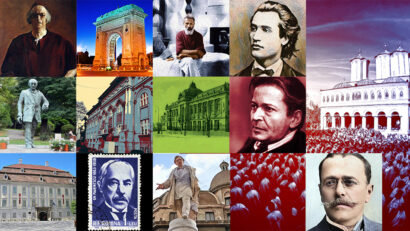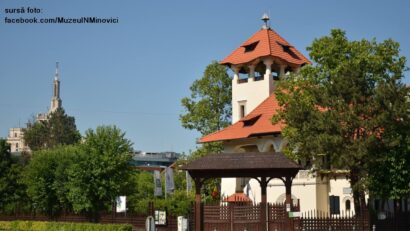Femininity and Childhood in Modern Times
The modernization of Wallachia and Moldavia, two principalities inhabited by Romanians commenced in the 19th century. And besides the institutional and economic changes, mentalities, habits and manners were also subject to transformation.

Christine Leșcu, 24.07.2022, 14:00
Romanians
gave up the Oriental style and fashion and quickly adopted Western fashions
radically changing their dressing style and the interior decorations of their
homes.
Women
quickly embraced the Western trends and proved to be the main promoters of
these changes in the Romanian society. Furthermore, the change in mentalities
allowed women to get more involved in social activities destined for children
and not only. So, in the first half of the 19th century children
benefitted from improved education and standard of living in comparison to the
previous generations. Well-off families in the aforementioned principalities started
hiring German, English or French tutors for their children, which replaced the
previous Greek private teachers they used to have. Bourgeois families in these
two regions inhabited by Romanians had their own approach in the education of
their offspring. Here is now at the microphone Nicoleta Roman, researcher with
the Nicolae Iorga Institute of History:
There was the emerging bourgeoisie, made up mainly of traders trying
to imitate the aristocrats in these regions. And in this case, these children’s
childhood was somehow protected by the involvement of their parents who
invested in their education in order to improve their status and the status of
their families. And it was that investment that made the difference between the
children coming from the rich families and aristocracy and the rest.
The issue of childhood
in the rural areas in the first half of the 19th century is still
under the scrutiny of the historians. However, what is known for certain is
that the struggle for survival in that area didn’t prove beneficial to the
process of transformations of Wallachia and Moldavia in early 19th
century. Changes in people’s outlook on childhood and the status of women were
quite sluggish in the rural world and the young boyars who were the engine of these
changes had their own outlook on education, mainly supervised by their mothers,
who thus become the promoters of new ideas in this area. Here is again at the
microphone Nicoleta Roman:
We should not forget to mention the
young generation of revolutionaries of 1848 or their associates who had made it
to major positions in state structures. They had different approaches in terms
of education and a series of state-funded social policies regarding education
or social assistance started to emerge. The growing interest in children
education shed a new light on childhood as compared to the previous years,
making children more visible in society. There was also that feeling of
national identity and the C.A. Rosetti – Mary Grant couple was a case in point.
That was a cosmopolitan couple who loved their children very much and tried to
instill this feeling of national identity in them, including through the names
they had given to them. Their first daughter was named Liberty and we’ve learnt
that the aforementioned feeling was also shared by their friends, the Golescu
and Bratianu families. So, the elite changed and so did its approach to children
education. The spirit of the 18th century had been replaced by one
focusing on how those children could represent the nation better and how they
could assume the values of a certain nation.
Journalist, writer, political leader
and revolutionary Constantin Alexandru Rosetti aka C.A.Rosetti in 1847 married Mary
Grant, a Scotswoman who was working as a governess. The couple was to become an
example not only for their cosmopolitan style but also for the fact they tried
to fairly share the household tasks and chores. They had a joint contribution
to their children’s education and worked together over their publications. Mary
Grant rapidly adopted the ideals of modernizing the Romanian space at that
time. And as Nicoleta Roman pointed out she wasn’t the only woman changing her
status in those years.
There was in early 19th century a tendency of
professionalizing some aspects in a woman’s life. The woman could become a
midwife, a teacher or a babysitter. These were paid activities and started
being integrated in the state system. So women started taking off from the
private field and finding their own way in life without giving up families or
households. They started gaining public recognition. At the same time, women
from the upper classes got involved in the process of founding charity
associations and charity actions. Some of them got involved in the process of
editing various publications. The 19th century saw a significant
improvement in terms of women’s involvement in society than the previous one. (bill)





























